Abstract
Observations made in 1952 in the Skála district of Lakonia (Peloponnese) showed that the local malaria vector, Anopheles sacharovi, had developed a certain degree of resistance to DDT and Gammexane.
Since chlordane had produced 100% mortality among A. sacharovi from the same area in laboratory experiments, investigations were made to test this insecticide under field conditions. A village where chlordane had not previously been used, but DDT had been applied annually from 1946 to 1950, was accordingly sprayed with a 74% emulsion. The survival rate of the mosquitos caught inside the sprayed premises was very similar to that of those captured in unsprayed control premises—a finding which indicates that sacharovi's resistance to DDT has now been extended to chlordane, although probably in a lower degree.
Full text
PDF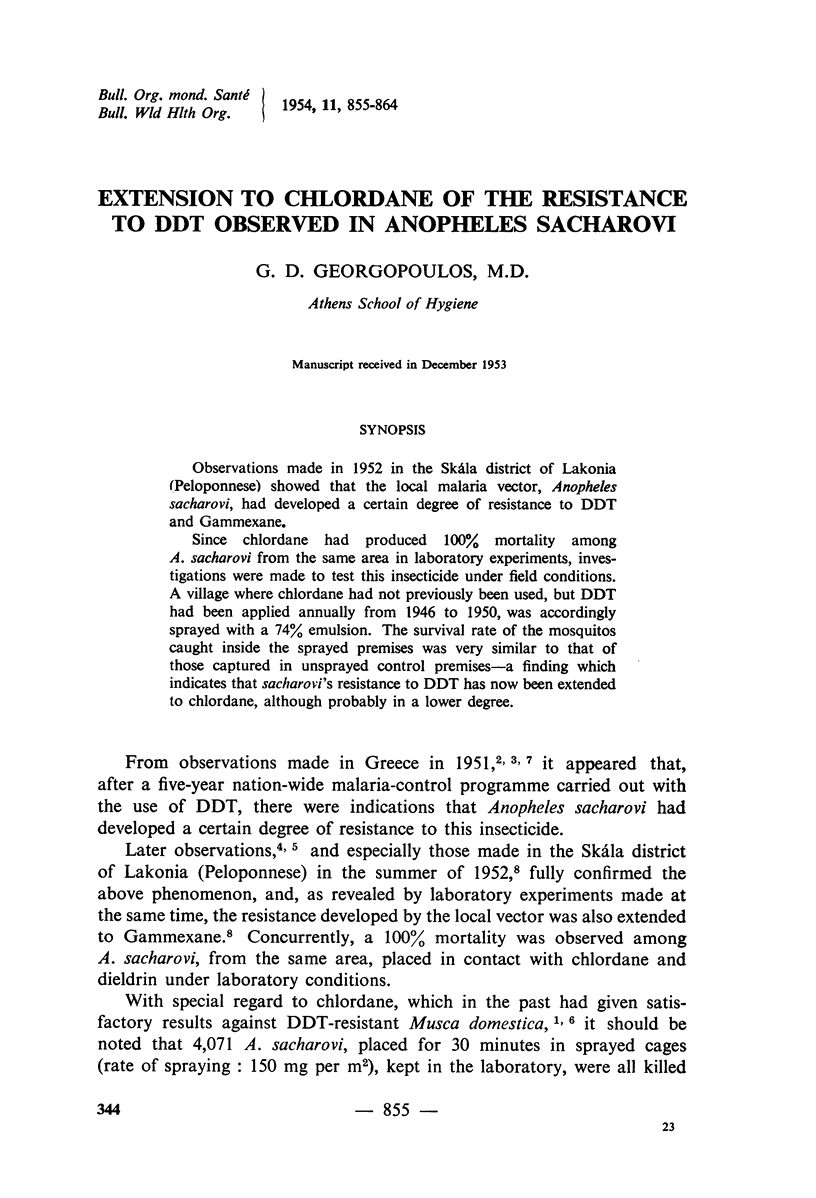
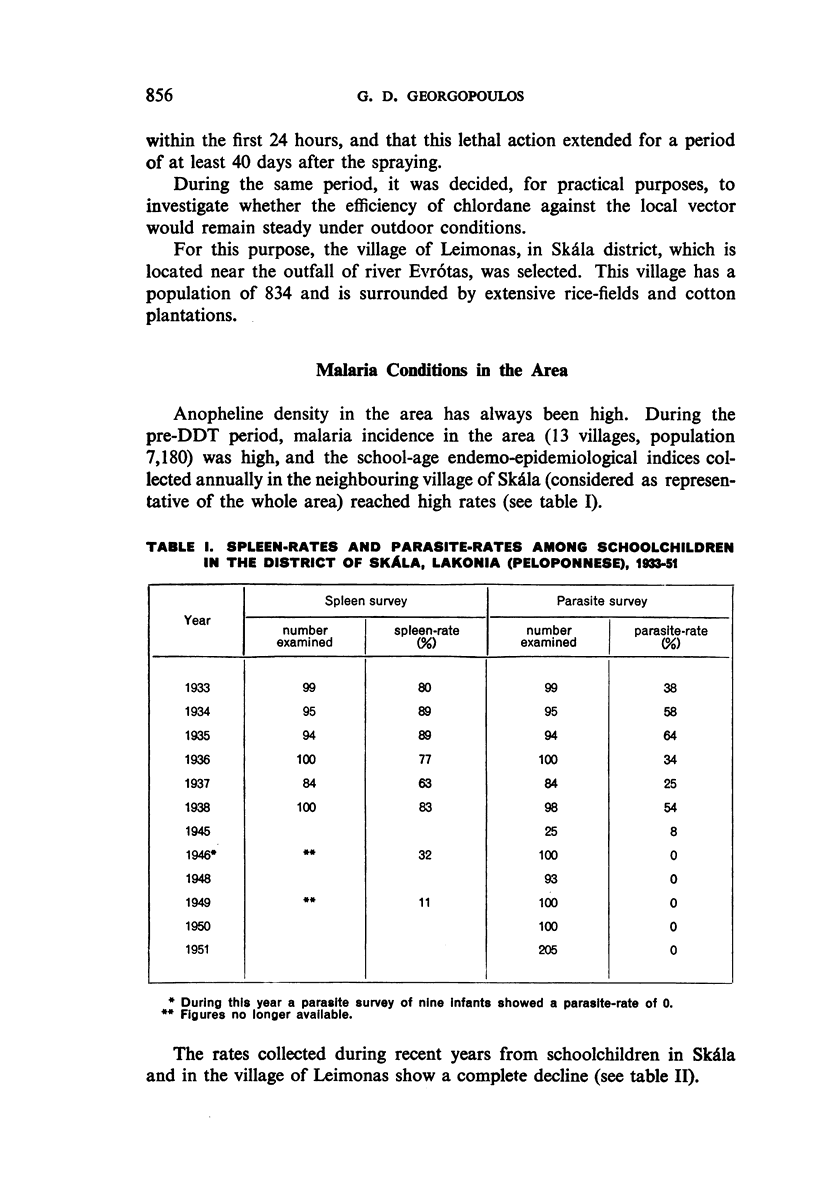
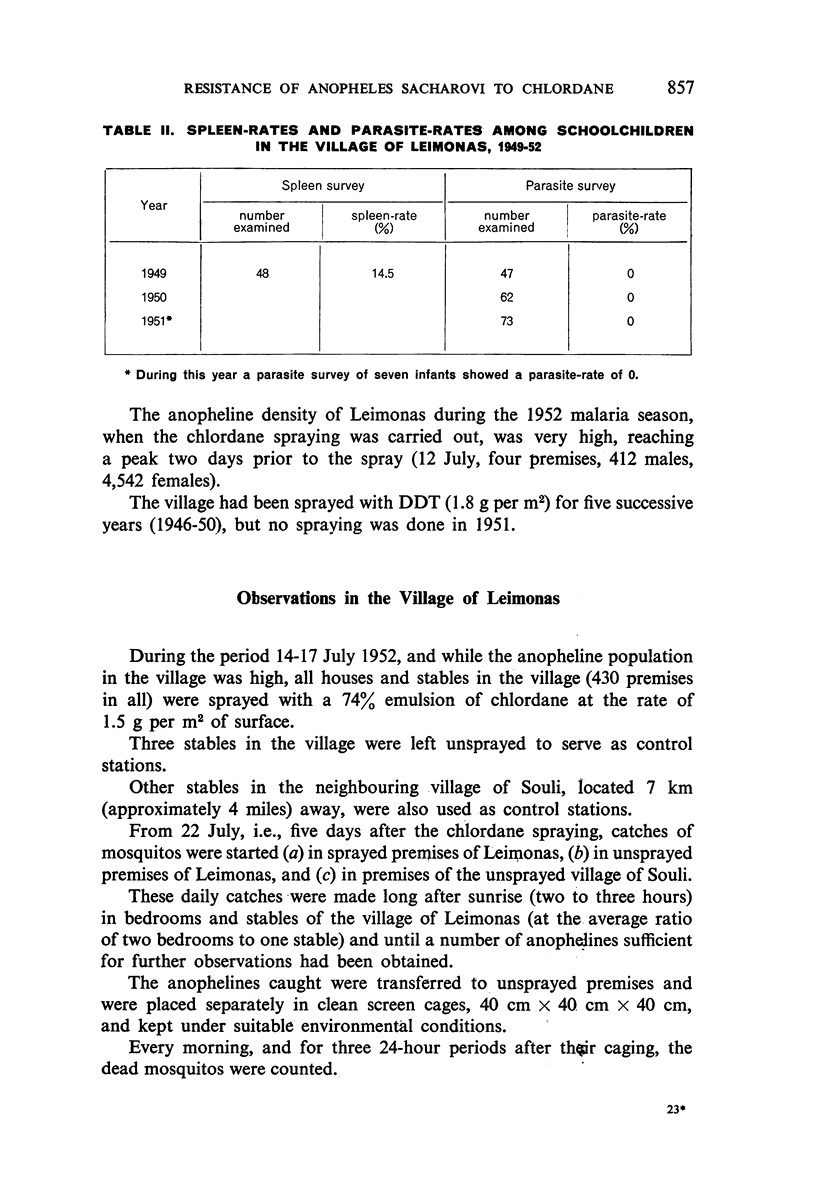
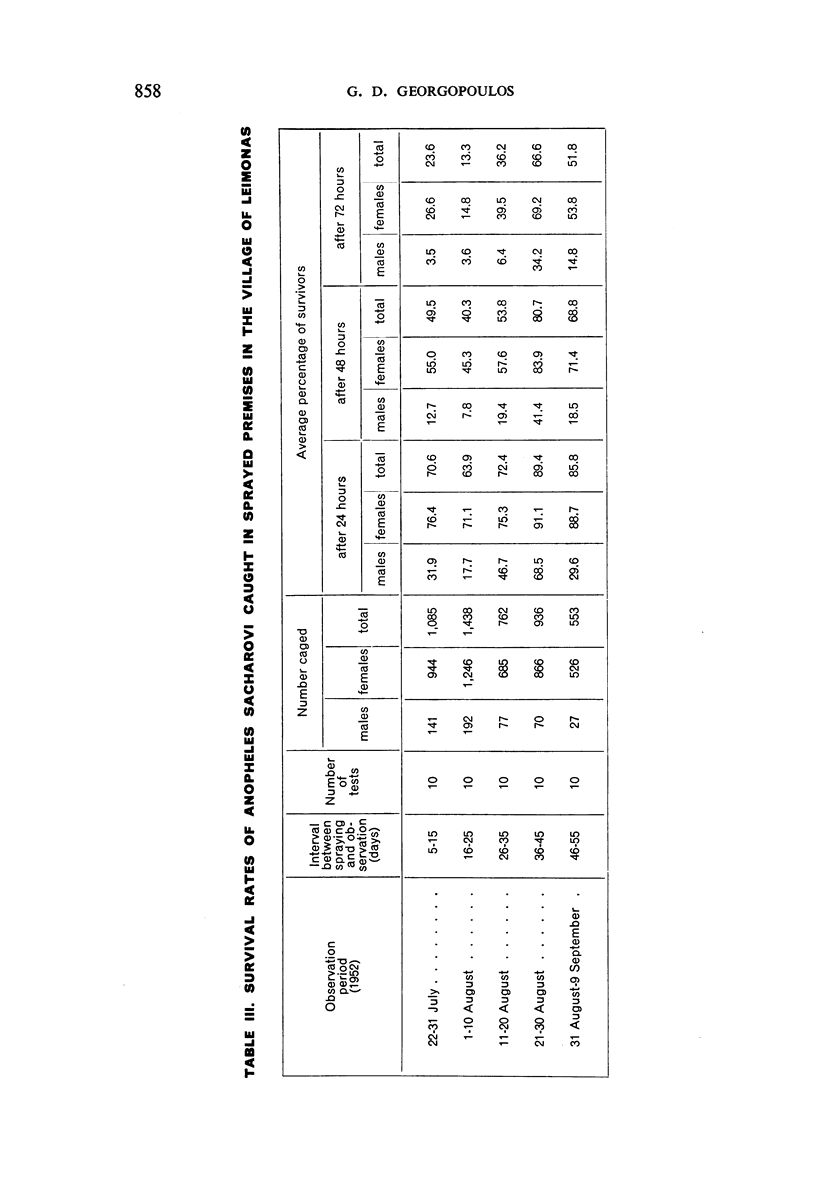
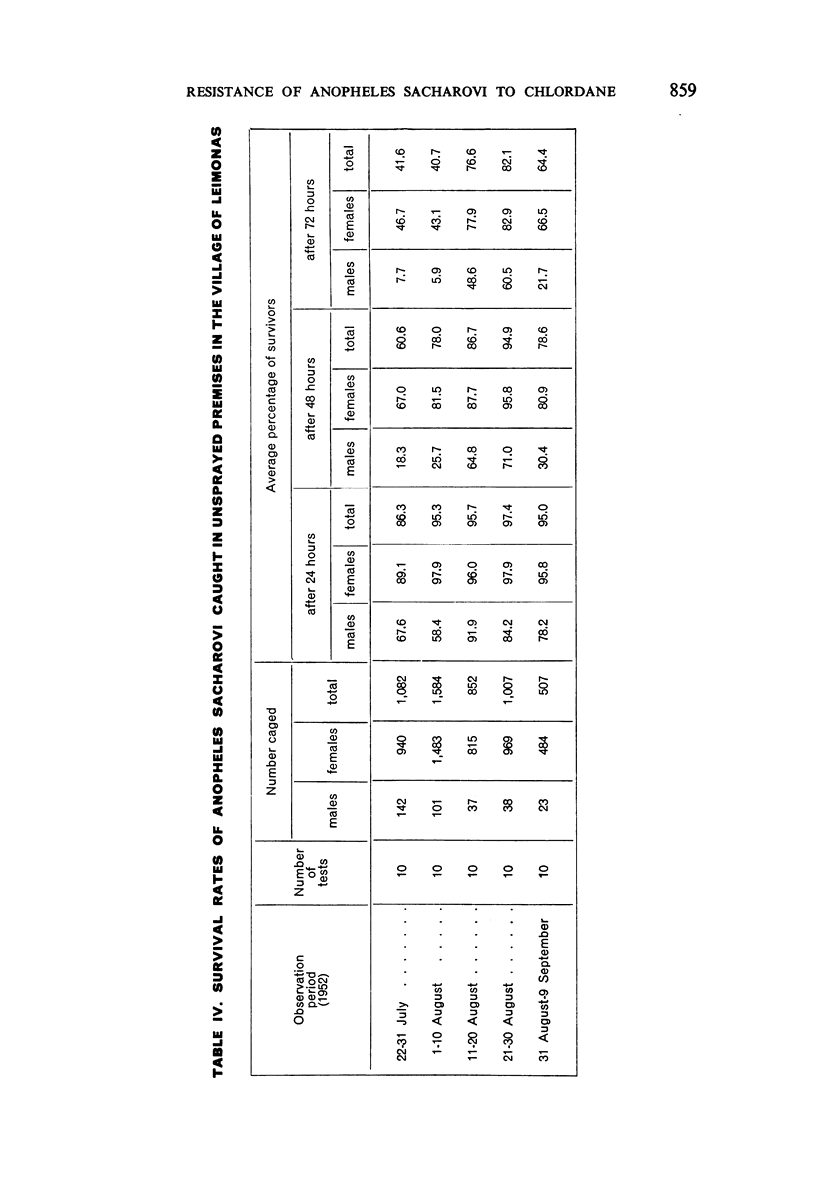
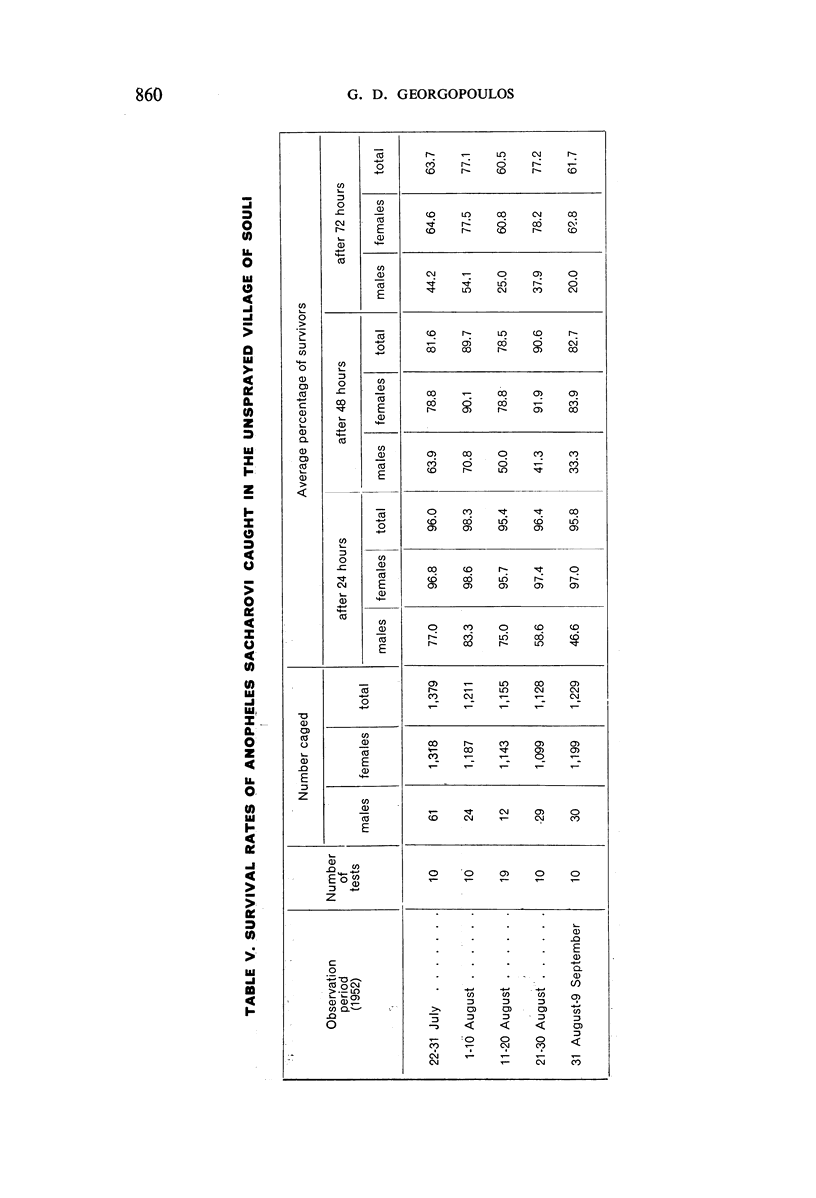
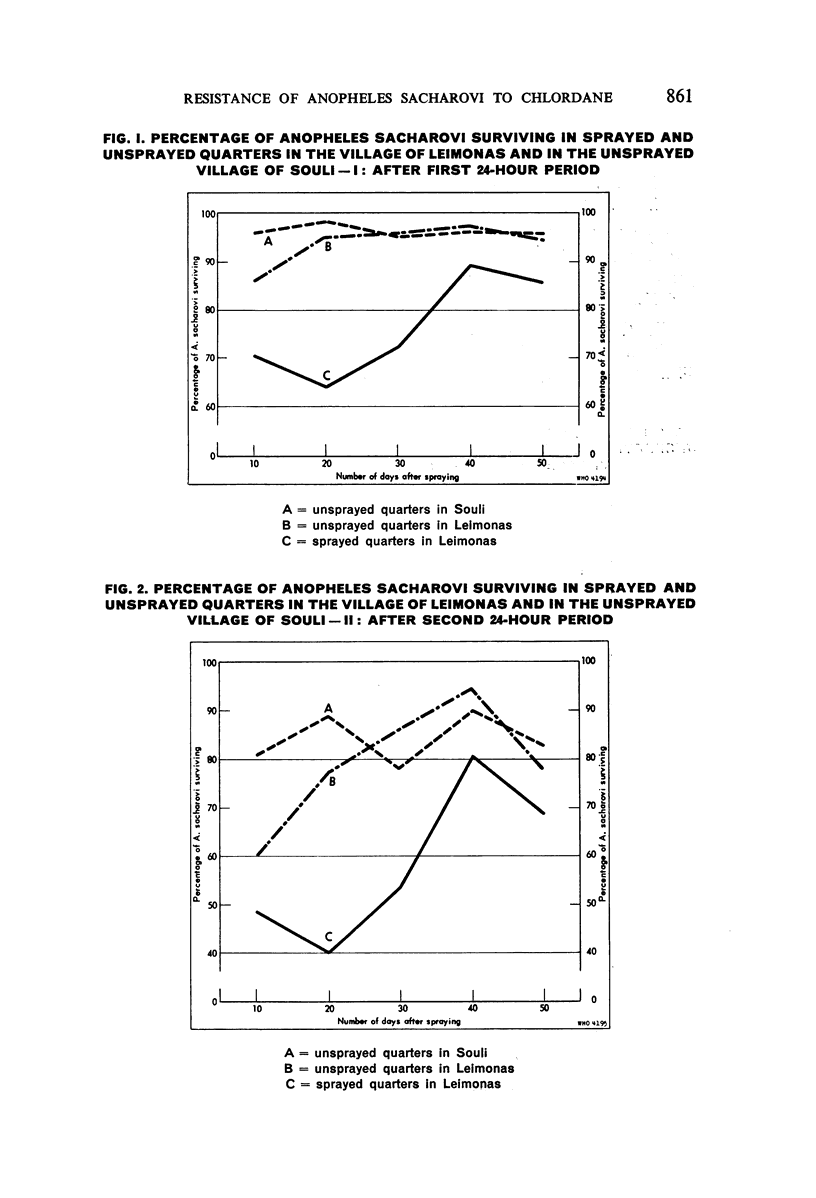
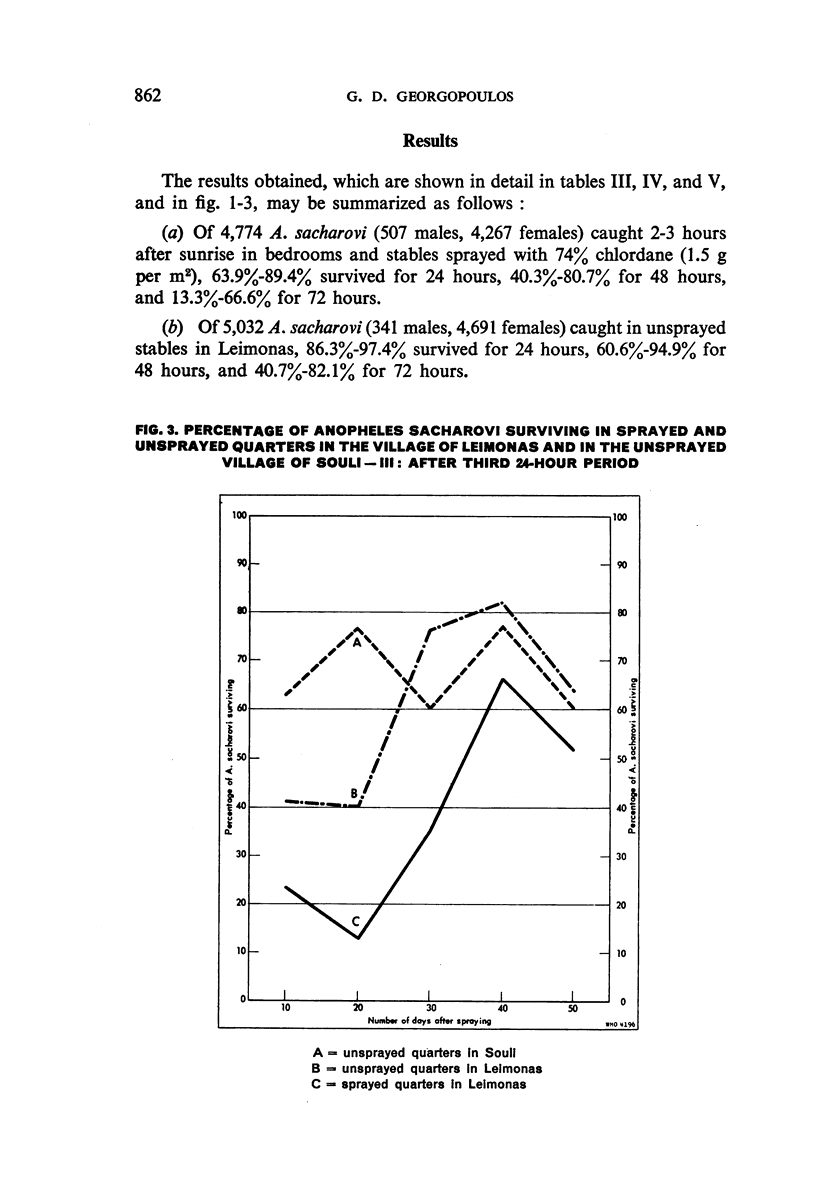
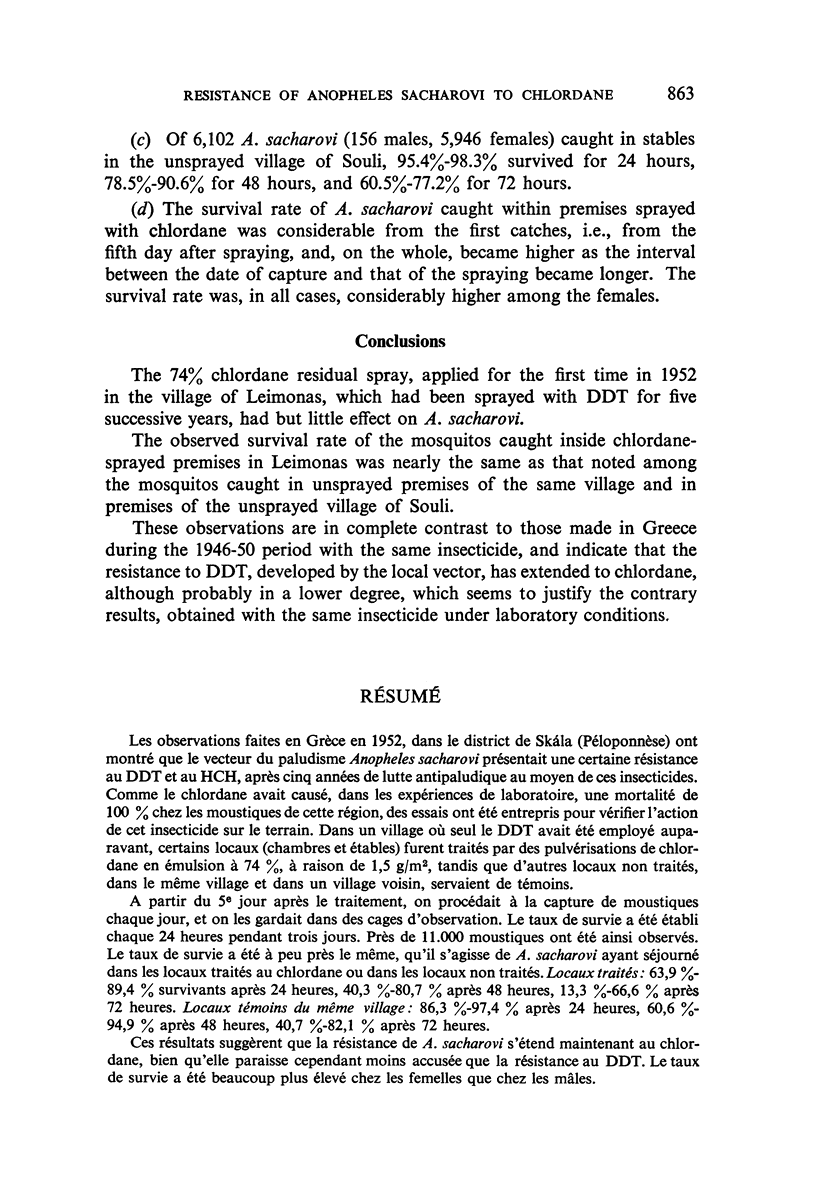
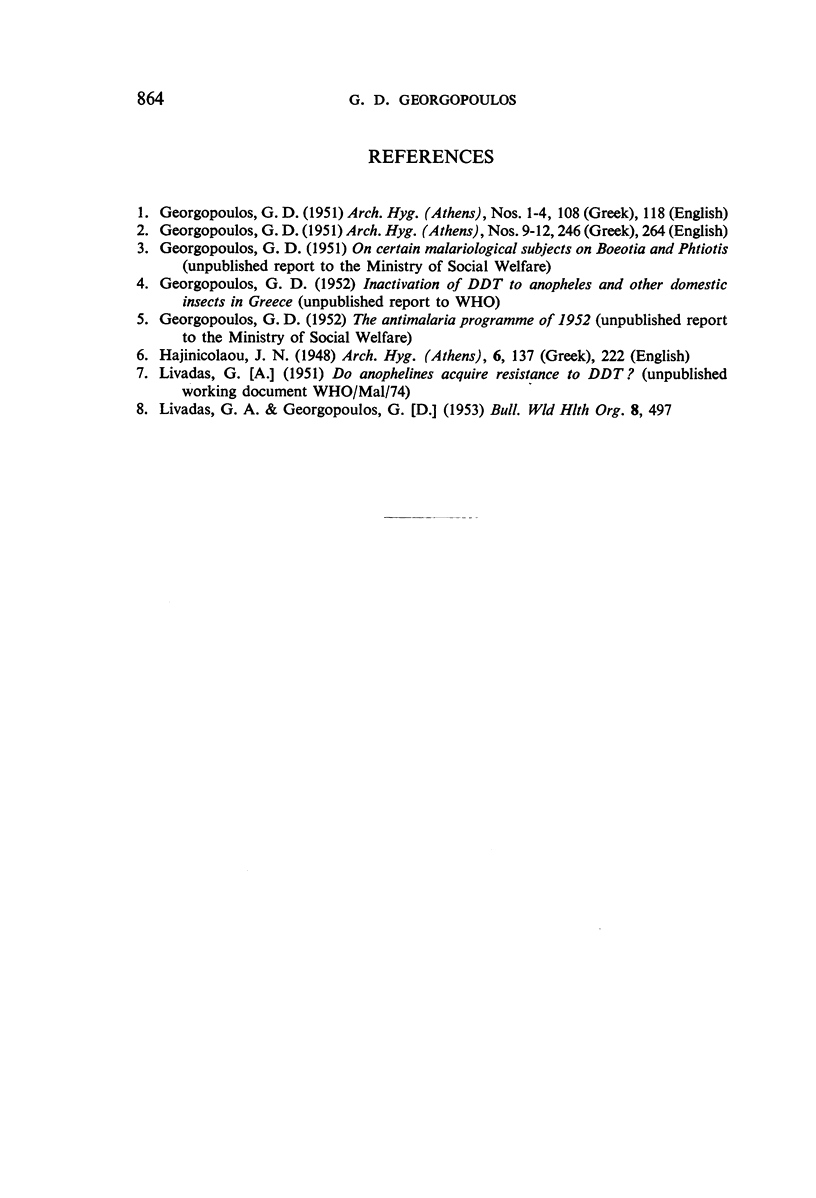
Selected References
These references are in PubMed. This may not be the complete list of references from this article.
- LIVADAS G. A., GEORGOPOULOS G. Development of resistance to DDT by Anopheles sacharovi in Greece. Bull World Health Organ. 1953;8(4):497–511. [PMC free article] [PubMed] [Google Scholar]


